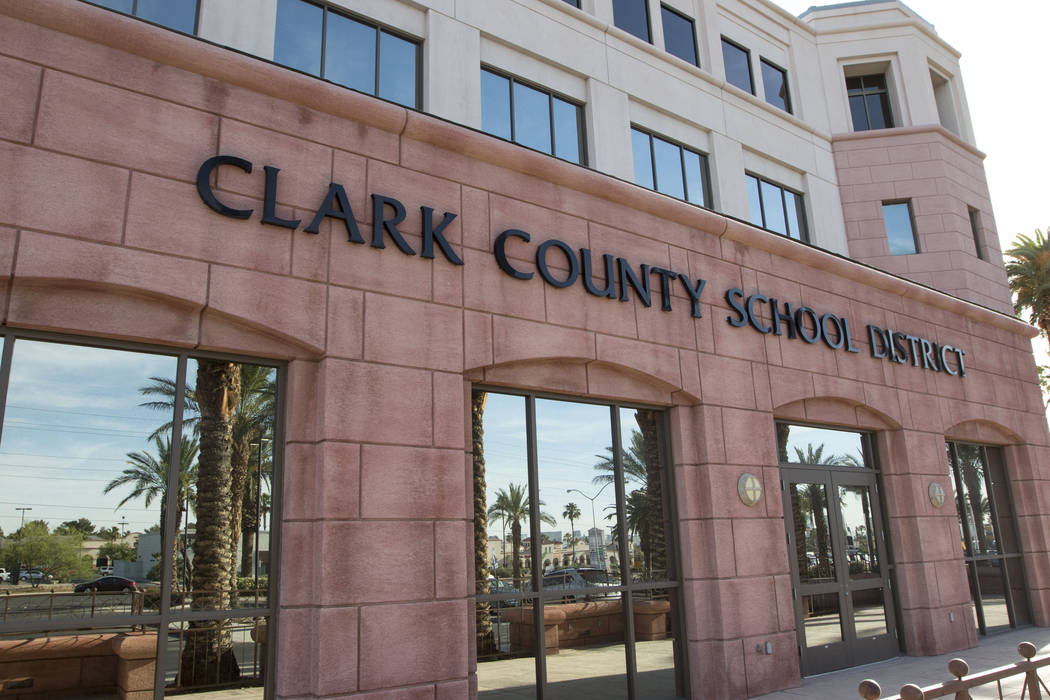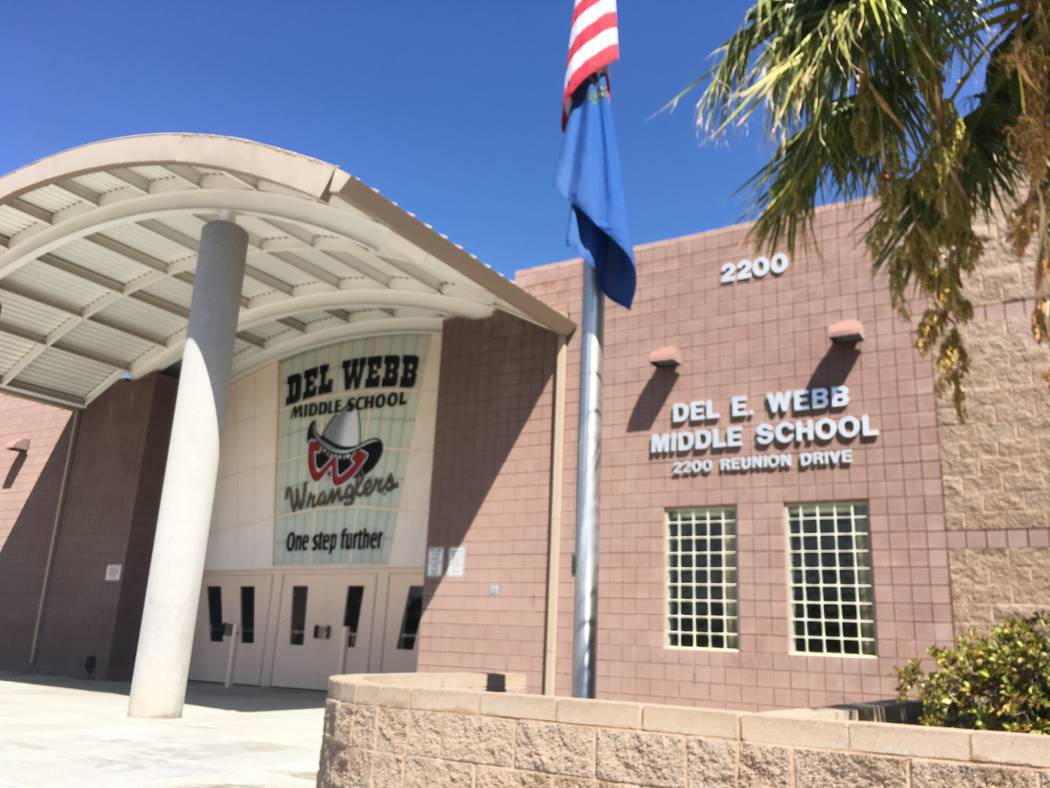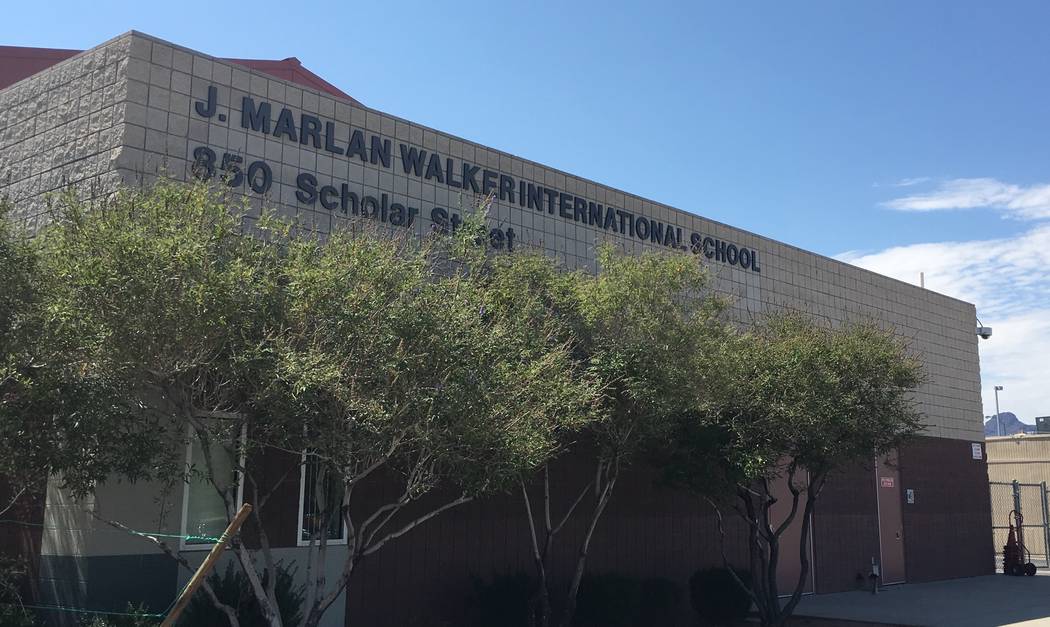Schools look to donations, grants amid proposed budget cuts
Amid sweeping budget cuts across the Clark County School District, schools in Henderson are coping with the losses by looking outside of traditional funding methods.
Webb Middle School is relying heavily on grants and parent donations, to help offset cuts of up to $90,000, said principal Paula Naegle. The school already had proposed nearly $54,000 in cuts before the latest round of expected reductions was announced.
Webb was awarded a grant aimed at providing flexible programs to improve student behavior, Naegle said. The grant has allowed administrators to phase out the school’s in-house suspension program, which required a paid staffer to monitor students. The school will replace the program by designating six “teacher preps” who meet with and mentor the at-risk students. The proposed cut will save the school $32,190 of the $53,936 it is expected to slash during the first round of budget cuts, according to Naegle.
The district is expecting up to an $80 million shortfall, according to a memo it sent to teachers and administrators, Naegle said. Superintendent Pat Skorkowsky, who on Sept. 7 announced his retirement effective June 2018, estimated a $52 million shortfall in a letter to teachers Sept. 6. Schools are expected to turn in updated budgets by Sept. 21.
In addition to the suspension program, Webb administrators cut the school improvement plan. The SIP allows schools to pay substitutes while teachers of the same subject meet for a day to plan for the next quarter and tweak academic plans, said Val Bringle, a teacher on Webb’s school organizational team.
Teachers will now be expected to plan “outside of the school day,” Bringle said.
“So here’s this plan on how we’re going to improve, and here’s the budget that we’re using to help us with that, but now we’re cutting that. But we’re still expected to improve,” Naegle said. “So it makes it really challenging.”
For schools not receiving additional funding through programs such as Title I, which target poor students and English-language learners, grants are one of the few viable options for administrators.
“I applied for a grant for a math program, for K-5,” said Shaun Cochran-Hall, principal of Walker Elementary School. “They wanted to know what made our school different. Why should they grant this money to us for these books? Being a non-Title (school), we get no federal support for our kids, no extra monies from anywhere.
“At this point, because we have nothing, our teachers have to go out and find materials on the internet to teach math … piecemealing it together, basically.”
Cochran-Hall said students at her school have not received new textbooks since 2002. Moreover, students at some elementary schools aren’t allowed to take textbooks home. That is hurting students, parents said.
“(My daughter) had to write out her textbooks last year for fourth grade, handwrite them into a composition book and bring that home to study off of,” said Jaclyn Heki, whose daughter is a fifth-grader at Walker. “So now you have a fourth-grader that’s not the best at taking notes, relying on her notebook to study. It’s stressful.
“You can’t take any more money from the system and expect it to get better.”
School administrators are focused on avoiding teacher layoffs that would lead to increased class sizes. At Webb, administrators were able to compile the nearly $54,000 in cuts without needing to lay off teachers. But additional cuts loom.
“Right now, we’re doing our level best to kind of even out the class sizes, but some of our biggest classes have 45 kids in them,” Naegle said, adding that the school’s expected ratio is 37 students per faculty member. “We’re looking everywhere we can to see what we can do to make sure that we’re not impacting kids. But at some point, you’re out of those funds, and then you really do need to look at, ‘Where are we going to get those dollars?’”
At Walker, oversized kindergarten classes forced the school to reassign a second-grade teacher to kindergarten.
“(My son’s) kindergarten class had 33 or 34 kids at the start of the year,” said Stephanie Hoyt, a mother of two children who attend Walker. “(The school) didn’t have money to bring in another kindergarten teacher … So my kid in second grade got four more kids in her class so that they could take a second-grade teacher away and give it to kindergarten.”
To spur more parent contributions, Cochran-Hall suggested during Walker’s school organizational team meeting the idea of posting a wish list on Walker’s website of items parents could donate to the school.
Contributions of paper and other supplies flowed in at the beginning of the school year from parents, but need remains, she said.
“We wouldn’t even be standing if it wasn’t for grants and our parents,” Cochran-Hall said.
Contact Diego Mendoza-Moyers at dmendozamoyers@reviewjournal.com or call 702-383-0496. Follow @dmendozamoyers on Twitter.






























